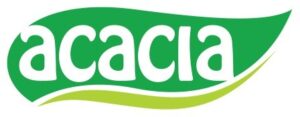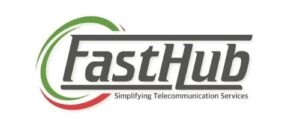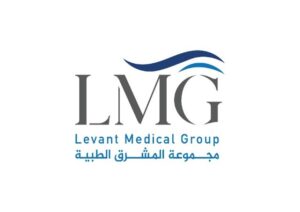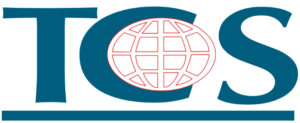Fixing Mistakes: A Guide to ISO 9001:2015 Clause 8.7
Introduction
No process is perfect. This guide to ISO 9001:2015 Clause 8.7 explains how to identify, control, and handle nonconforming outputs to prevent them from reaching your customers. Learn the crucial steps to take when things go wrong, whether it’s a flawed product on the factory floor or a service issue detected after delivery. This clause is a fundamental part of your quality management system, as it provides the framework to define, correct, and document deviations. By effectively managing nonconformities, you mitigate risks, reduce waste, and build lasting customer confidence by ensuring only conforming outputs are used or delivered.
For expert assistance in implementing these controls and achieving ISO certification, partner with Maxicert.

8.7 Control of Nonconforming Outputs
8.7.1 Identification and Control
The organization shall ensure that outputs that do not conform to their requirements are identified and controlled to prevent their unintended use or delivery.
The organization shall take appropriate action based on the nature of the nonconformity and its effect on the conformity of products and services. This shall also apply to nonconforming products and services detected after delivery of products, during or after the provision of services.
The organization shall deal with nonconforming outputs in one or more of the following ways:
- correction.
- segregation, containment, return or suspension of provision of products and services.
- informing the customer.
- obtaining authorization for acceptance under concession.
Conformity to the requirements shall be verified when nonconforming outputs are corrected.
8.7.2 Documented Information
The organization shall retain documented information that:
- describes the nonconformity.
- describes the actions taken.
- describes any concessions obtained.
- identifies the authority deciding the action in respect of the nonconformity.
ISO 9001:2015 Clause Guide Panel
- Clause 1
- Clause 2
- Clause 3
- Clause 4 – Sub-clause 1
- Clause 4 – Sub-clause 2
- Clause 5 – Sub-clause 1
- Clause 5 – Sub-clause 2
- Clause 5 – Sub-clause 3
- Clause 6 – Sub-clause 1
- Clause 6 – Sub-clause 2
- Clause 7 – Sub-clause 1
- Clause 7 – Sub-clause 2
- Clause 7 – Sub-clause 3
- Clause 7 – Sub-clause 4
- Clause 8 – Sub-clause 1
- Clause 8 – Sub-clause 2
- Clause 8 – Sub-clause 3
- Clause 8 – Sub-clause 4
- Clause 8 – Sub-clause 5
- Clause 8 – Sub-clause 6
- Clause 8 – Sub-clause 7
- Clause 8 – Sub-clause 8
- Clause 8 – Sub-clause 9
- Clause 8 – Sub-clause 10
- Clause 8 – Sub-clause 11
- Clause 8 – Sub-clause 12
- Clause 9 – Sub-clause 1
- Clause 9 – Sub-clause 2
- Clause 9 – Sub-clause 3
- Clause 9 – Sub-clause 4
- Clause 10
Handling Nonconformities in Practice
In the course of an organization’s activities, problems will occur. The standard requires you to have a process to identify nonconforming products and to decide how you will dispose of it. It might be necessary to keep it separate from acceptable products. When nonconformities are found after delivery or use has started, appropriate action could include informing all those affected.
The methods and techniques you use for controlling and documenting nonconformities should be appropriate for your organization. Use of formal nonconformity reports, or customer complaint forms, may facilitate keeping track of what action was taken. The forms and records do not need to be complicated. They should include information about the:
- nature of the problem.
- evaluation of the product.
- disposition of the material (was it scrapped, reworked, concession, return to a supplier).
- regraded for other use.
- accepted by the customer with a person authorizing the disposition.
- reference to the corrective action, if required, that may have been initiated as a result of the nonconformity.
Application of Options for Managing Nonconformities
The standard requires you to deal with nonconforming products “when applicable” in one or more of four ways, as described above under a) to d). Depending on the product concerned (e.g. whether the product is tangible or a service), one or more of the four ways may not be available to you.
Another case limiting the applicable ways would be where regulations governing the product or service prohibit concession under option d), because you are not allowed to place a product on the market which does not meet legal requirements.
If you are a service organization, you might not detect nonconformities as these can occur while or after the service is being, or has been, delivered to your customer. It is not possible to correct service delivery processes in the same way a tangible product can be handled. Correction can be taken after the service has been delivered, such as providing a refund for services provided, or performing the service again. It is also possible to initiate a corrective action (10.2) so that the process may be revised to reduce the probability of recurrence of the problem.
Some customers might require notification of any non-conforming product or service and approve what steps should be taken. If this is the case, it will be necessary to notify the customer following detection of the nonconforming product or service. You might wish to include information concerning the steps you propose taking along with the notification.
Correction of Nonconformities without Further Documentation
In some cases, the organization may choose to correct the nonconformity using option a). In this case, the organization must have established criteria for what type of nonconformities can be corrected without further documented information. For example, in an automotive plant, if the nonconformity can be repaired in-place, documented information is not required.
Documented information will need to be kept of any decision made, approval given by the customer, any rework or repair procedure, and the results of the monitoring and measurement on any rework or repair.
If the nonconformity has been detected after delivery, it is necessary to take action.
Example of Nonconformity Handling after Delivery
If, for example, a catering company discovers that it has inadvertently used processed meat which was past its use-by-date (or shelf life) to make sandwiches for contract customers (retail chain stores), a number of actions might be required, such as:
- An investigation to find out the extent of the problem,
- Segregation and quarantine of the remaining processed meat from that consignment,
- Segregation and quarantine of affected sandwiches awaiting delivery to the retail outlets,
- Recall from the retail outlets those sandwiches likely to be similarly affected.
Depending on the potential risks, there could be a need to involve the applicable regulatory bodies and to make the public aware of the problem.
Nonconformity in Service Provision: A Transport Example
For example, if you are a bus company whose service is the provision of transport to a timetable, then a nonconformity would arise when a bus engine breaks down.
To fix the nonconformity you need to find ways to help passengers to proceed with their journey and only subsequently need to call for maintenance personnel to repair the engine.
Conclusion
Ultimately, ISO 9001:2015 Clause 8.7 is about more than just finding mistakes—it’s about having a plan to fix them. By establishing clear processes for identifying nonconformities, taking appropriate action, and keeping thorough records, you can turn a potential problem into an opportunity for improvement. This systematic approach ensures that even when errors occur, your organization remains in control, can protect its customers, and can learn from the experience to prevent similar issues from happening again.
For expert guidance on establishing this robust process and achieving ISO certification, partner with Maxicert.
Free 60–90 day implementation plan available after consultation.
FAQ
What is the main purpose of controlling nonconforming outputs?
The main purpose is to prevent unintended use or delivery of products or services that fail to meet requirements. This protects customers and mitigates risks.
What are the four main ways to deal with nonconformity?
The standard allows an organization to deal with a nonconformity by correction, segregation, informing the customer, or obtaining an acceptance under concession.
How are nonconformities handled in service industries?
Since a service cannot be “fixed” in the same way as a product, the organization must take appropriate action like a refund or repeat service and then use the event for process improvement.
Can a nonconformity be corrected without a formal record?
Yes, but only if the organization has pre-defined criteria for which minor nonconformities can be corrected without a formal report.
Client Testimonials
What Our Clients Say About Us?
We are trusted by thousands of clients belonging from technology, manufacturing, healthcare and various sectors








Our overall experience with Maxicert was satisfied. The audit and consulting part was handled carefully, we fulfilled our client requirement of ISO 27001 hassle free.
Kevin Santiago BDM – Clarks Outsourcing, PhilippinesTimely response and knowledge of ISO standards can be seen together in the team of Maxicert, we grow because of the service providers like Maxicert.
Samuel Christopher Quality Assurance Head – OEQA, NigeriaWe did Food safety certification with Maxicert, the service was extraordinary and their consultant had good experience of the subject.
Mr. Venkatesh Production Manager - Acacia Foods and Beverages, ZambiaWe engaged a consultant of Maxicert for our business certification, we now have a well-designed and organized department procedures and we rectify our errors through internal audits regularly.
Abdullah Al Rayes Managing Director – TCS, BahrainTechnical expertise by the team of Maxicert helped us achieving our ISO 13485 certificates, we now proudly say that we have achieved our target, all thanks to the team.
Nady Boustany CEO – LMG, IraqMaxiCert's approach to meet our needs proved instrumental in facilitating a seamless transition throughout the entire ISO certification process for us. Their training sessions are so much helpful.
Ms. Latifa Al Salem Investor portfolio – Ministry of Investment, Saudi ArabiaMaxicert is a one stop solution, we got trainings, documents, audit and certification at one place, they facilitated everything.
Ms. Mariam Chaggama VP – Fasthub, Tanzania





Their presence in Oman made us even better to accomplish our goal of achieving ISO certificates on time, we will definitely recommend their services.
Mr. Sailesh Mohanakrishnan Division Manager – Khimji Ramdas, Oman